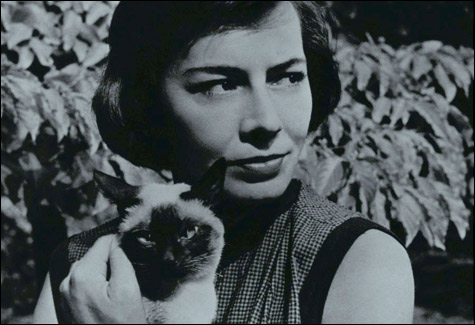
NASTY! Highsmith’s malevolence was no mere literary device. |
| The Talented Miss Highsmith: The Secret Life and Serious Art of Patricia Highsmith | By Joan Schenkar | St Martin’s | 704 pages | $40 |
Is it living in a wishy-washy culture of sheepish PBS humanism and numbing political correctness that makes the nasty, psychopathic amorality — no, immorality! — of Patricia Highsmith's novels so savory and appealing? If you like Celine, if you dig the Marquis de Sade, then Highsmith's suspense thrillers are for you. From Strangers on a Train to The Talented Mr. Ripley to The Tremor of Forgery, hers is a toxic subterranean environ where murderers without conscience get away with their brutal killings, and you and I, dear readers, celebrate their criminality as gleeful co-conspirators. Go, Guy — eliminate Bruno's ridiculous father in Strangers on a Train! Go, Tom Ripley, on your homicidal path through five tasty novels!Others play at people-hating as a punk pose. The glue in Highsmith's œuvre is that she really means the malevolence. Her books boil with misanthropy, misogyny, contempt for human beings, and, read closely, self-contempt. And let's not forget her deep loathing of kids and dogs.
In life, add in her revolting putdowns of blacks, Jews, immigrants, the Portuguese. She was pro-Intifada because she despised Israel. She voted for the first George Bush.
"She wasn't nice. She wasn't polite. And no one who knew her well would have called her a generous woman." That opening line sets the tone of Joanne Schenkar's The Talented Miss Highsmith, a sprawling, ambitious, annoyingly disorganized, sometimes weirdly subjective biography that's way too long and still manages to be compulsive, juicy reading. Schenkar's bragging point is that she's the first Highsmith chronicler to make use of hidden notebooks and diaries that the novelist had scribbled in for decades. These offer uninhibited gushings of Highsmith's bilious thoughts, plus running commentaries on her extraordinarily active, and fractious, lesbian love life.
Schenkar makes a telling comparison of Highsmith with Jack Kerouac. He went to Columbia, she to Barnard, and both raced about America and Mexico, finding hot lovers, fighting with them, and quickly shedding them, but writing, writing, writing. Both were symbiotically entwined with their quarrelsome mothers, and both were done in by decades of non-stop alcohol. At the end, having squandered their smashing looks, they were both portly, bitter stay-at-homes, cursing the world.
Here's Highsmith's description of a never-written book that so describes herself: "It's about the type of female homosexuals who have something missing from their hearts, who really hate their own sex, who must have visible, palpable strife in order to keep going." Highsmith railed and complained throughout her unhappy life (1921–1995), experienced mad crushes but couldn't stay in love, had wretched things to say about being female, and was so conflicted about her active lesbianism that she published her classic Sapphic novel, The Price of Salt, under the pen name of Claire Morgan.
Schenkar makes a big deal out of discovering that Highsmith spent years in the 1940s anonymously writing comic books, as if she were sharing the author's elitist shame. In this age of graphic novels, readers will just say, "Cool!" As for the girl-on-girl affairs with which this bio is obsessed, I wish Schenkar had described the lovers more vividly. Women come and go, but it's hard to get a handle on any of them. What the author does succeed in is a portrait of her subject. Highsmith is hateful, yet somehow, at the end of all these up-close, tormented pages, you're more likely to feel sad and sorry for her.